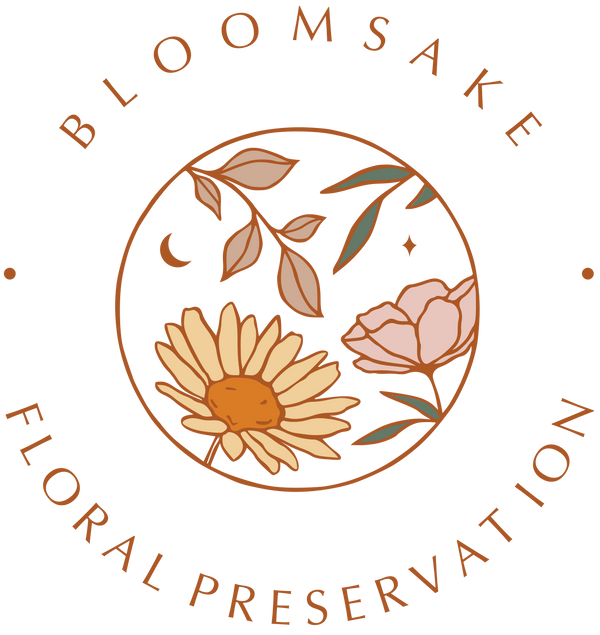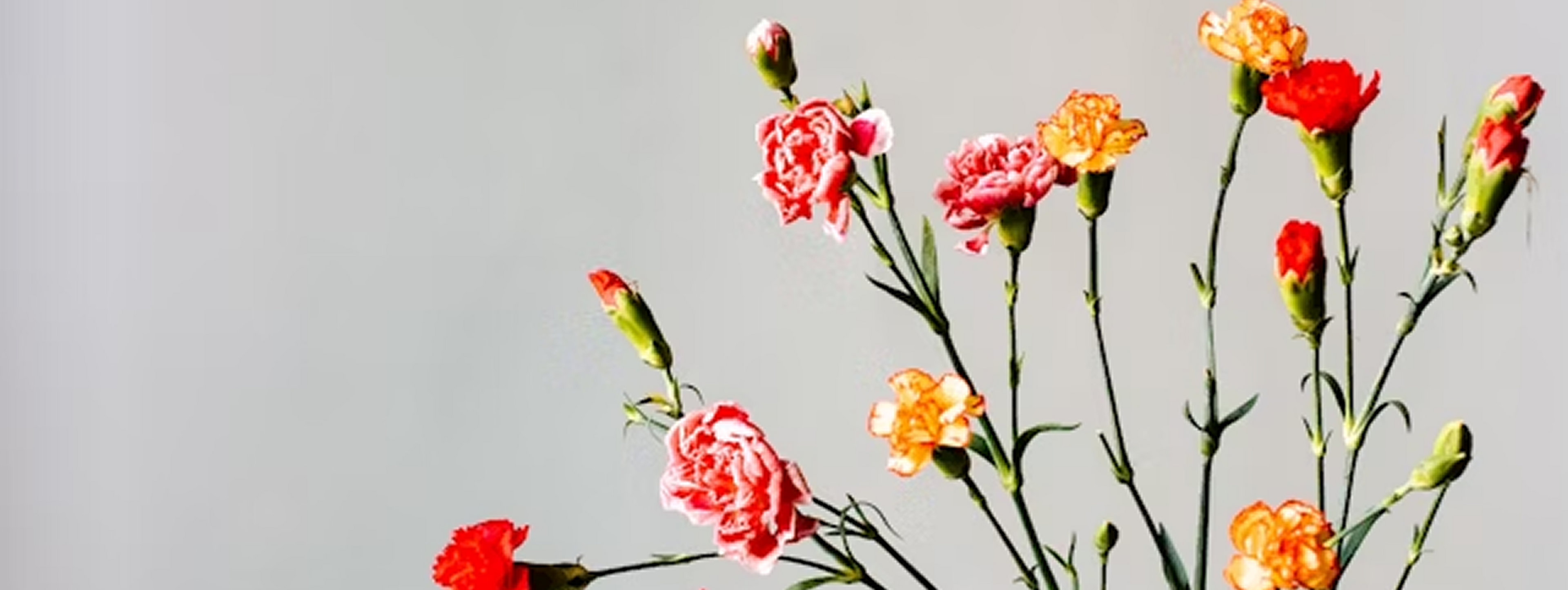
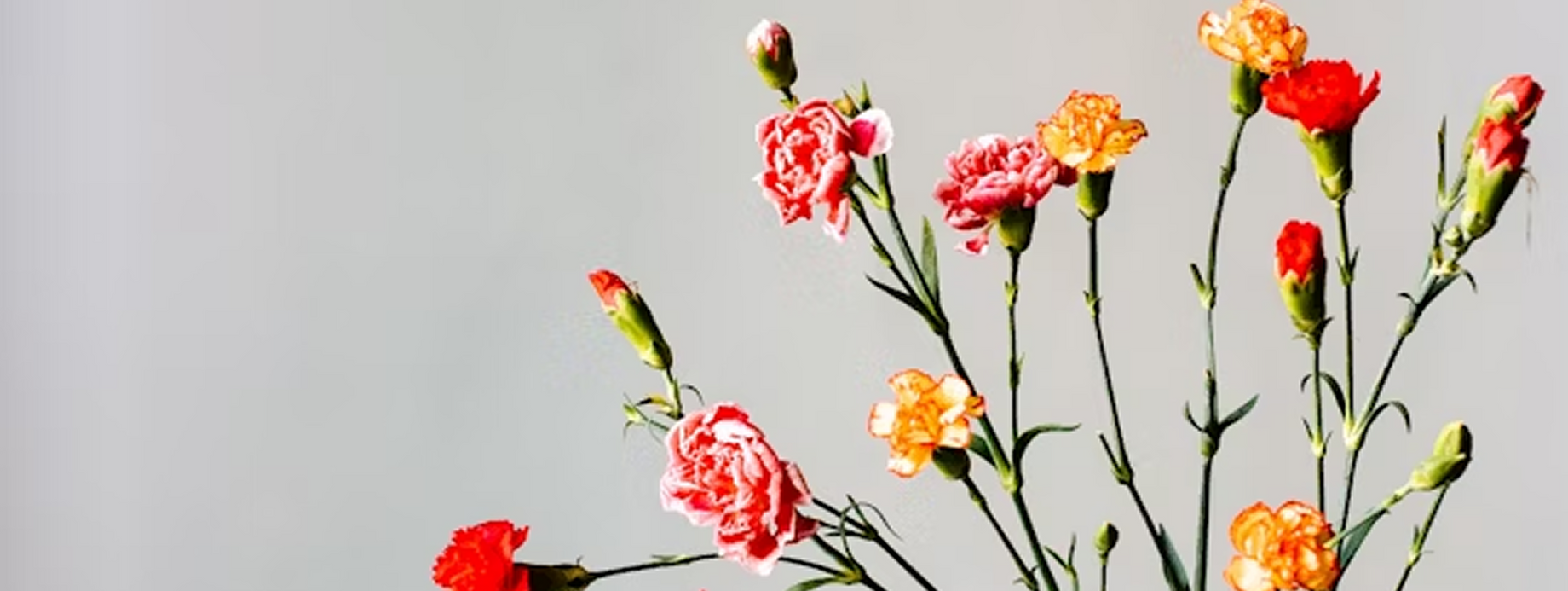
What To Expect When Preserving Flowers In Resin
Preserving your cherished flowers in resin is a beautiful and lasting way to celebrate life’s most meaningful moments. However, to ensure the highest quality and longevity of your keepsake, it’s important to understand how the process works and what natural variations may occur.
Flower Drying: The Foundation Of Preservation
Before we begin crafting your resin keepsake, every flower must be completely dried. Moisture is incompatible with resin and can lead to decay, discoloration, or even rotting over time — compromising both the look and integrity of your piece. We use silica gel drying to gently extract moisture while helping flowers retain as much of their original shape and color as possible. That said, natural changes may still occur:
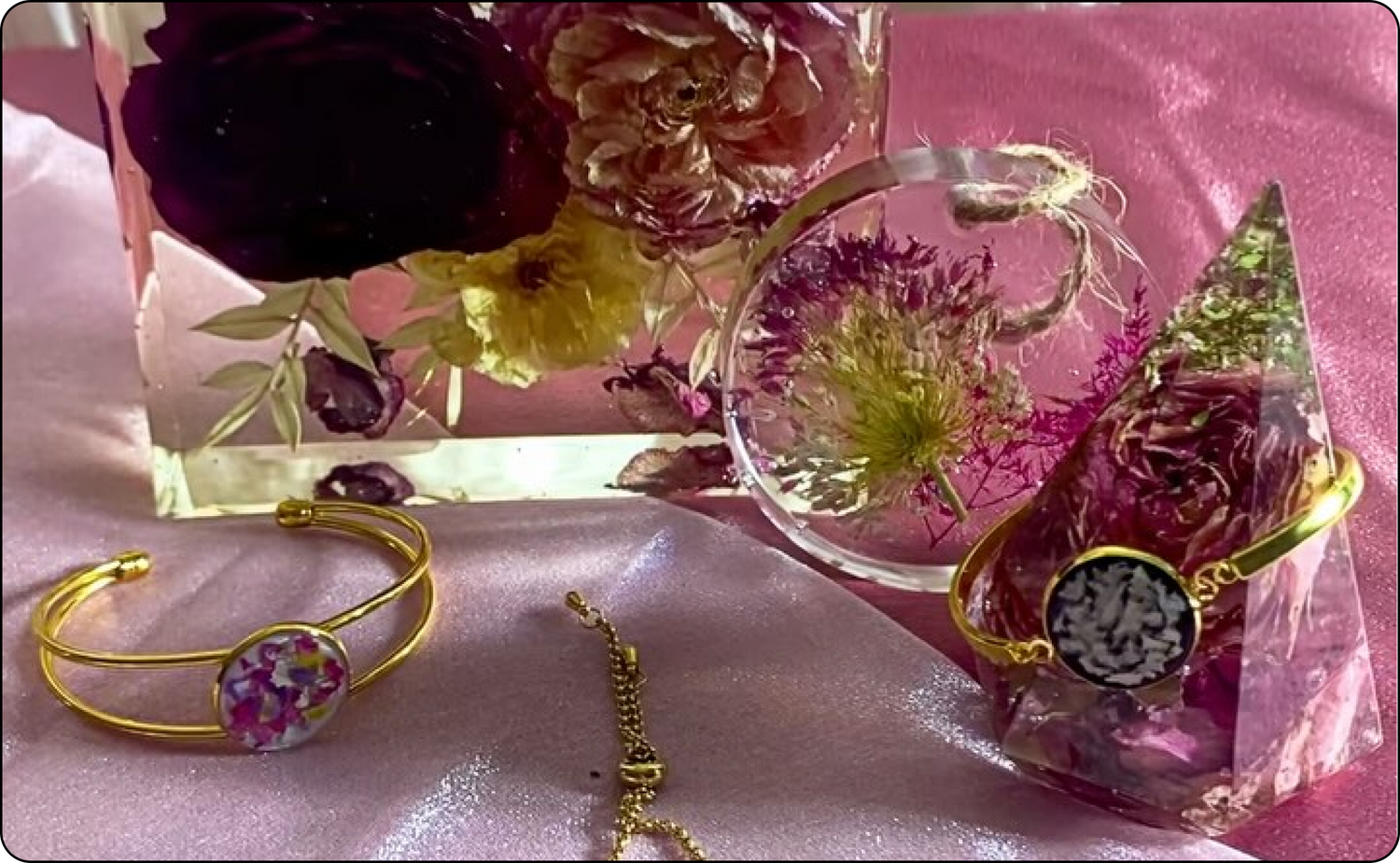

Red roses
White roses
Tropical blooms
Succulents
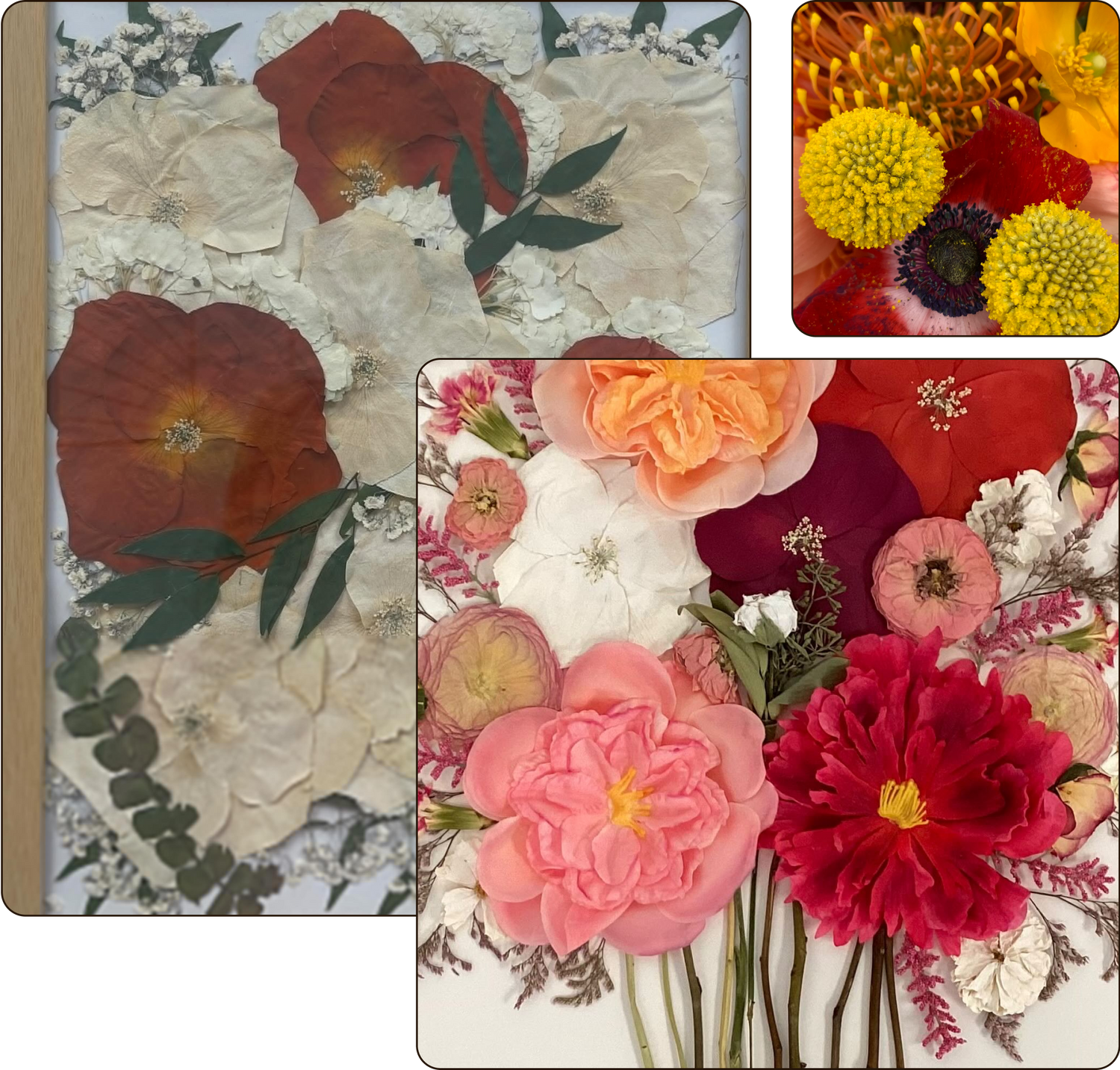
Understanding Flower Bruising
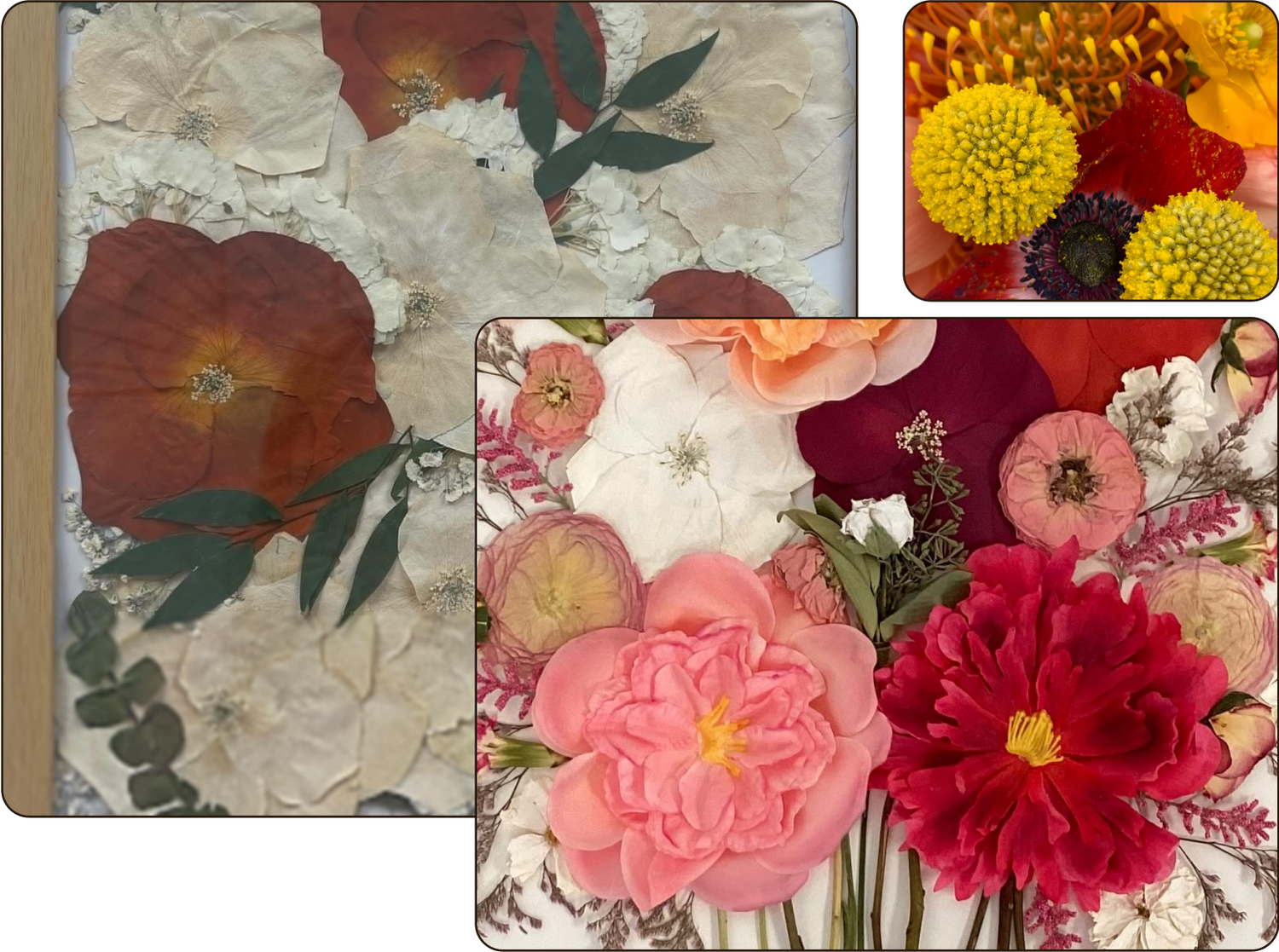
Bruising refers to translucent spots that sometimes appear after resin is poured over flowers. This is particularly common in roses, tropical varieties, and lighter-colored blooms. Rest assured, these are not holes — but rather natural reactions as petals interact with resin. While some clients embrace these subtle textures as part of the flower’s preserved character, others may prefer a more flawless appearance. In those cases, we recommend our color enhancement service, which helps minimize bruising and enrich the vibrancy of your flowers.
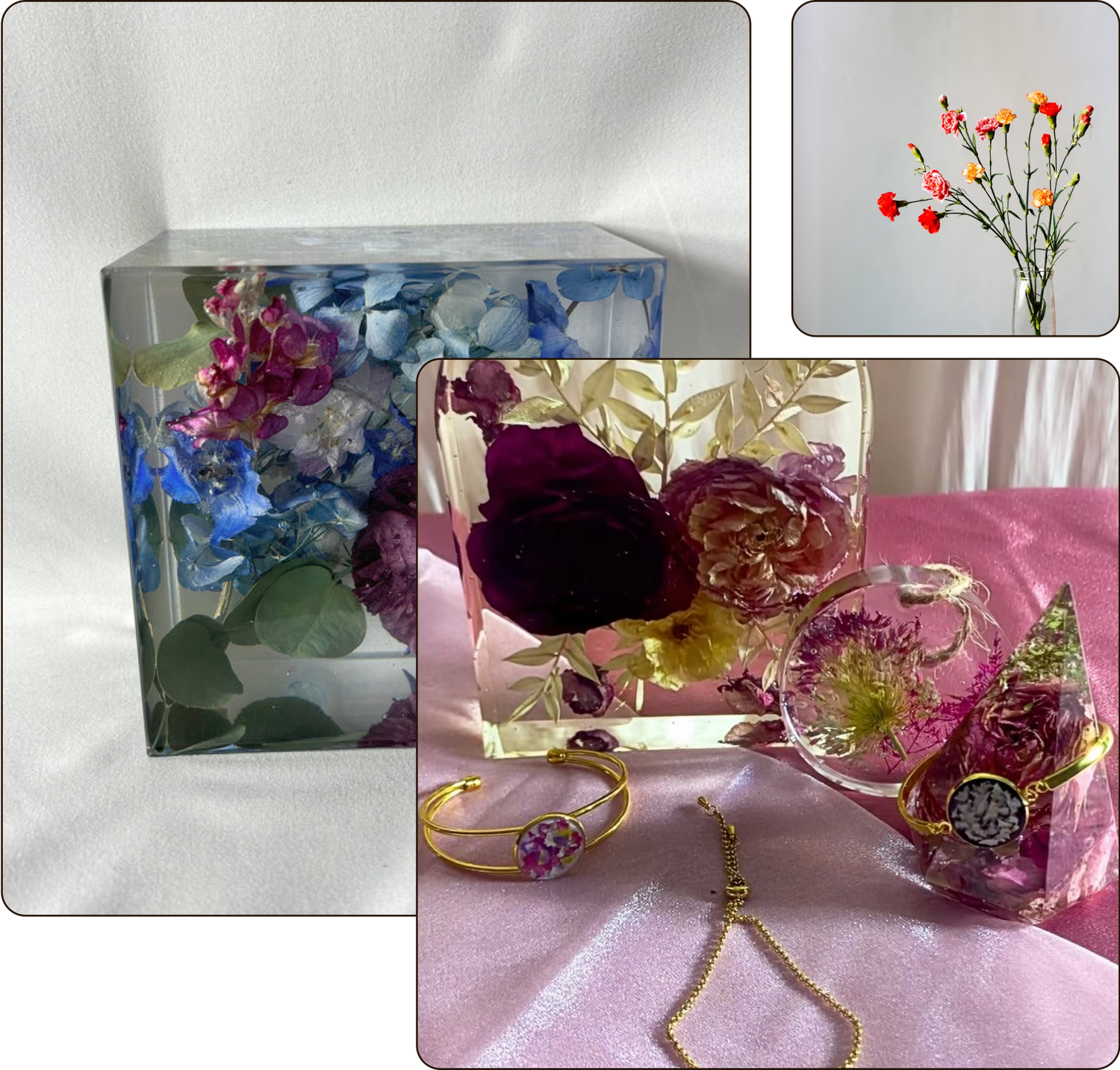
Resin Ambering & Other Natural Effects
Resin is a dynamic medium that may develop certain natural characteristics over time:
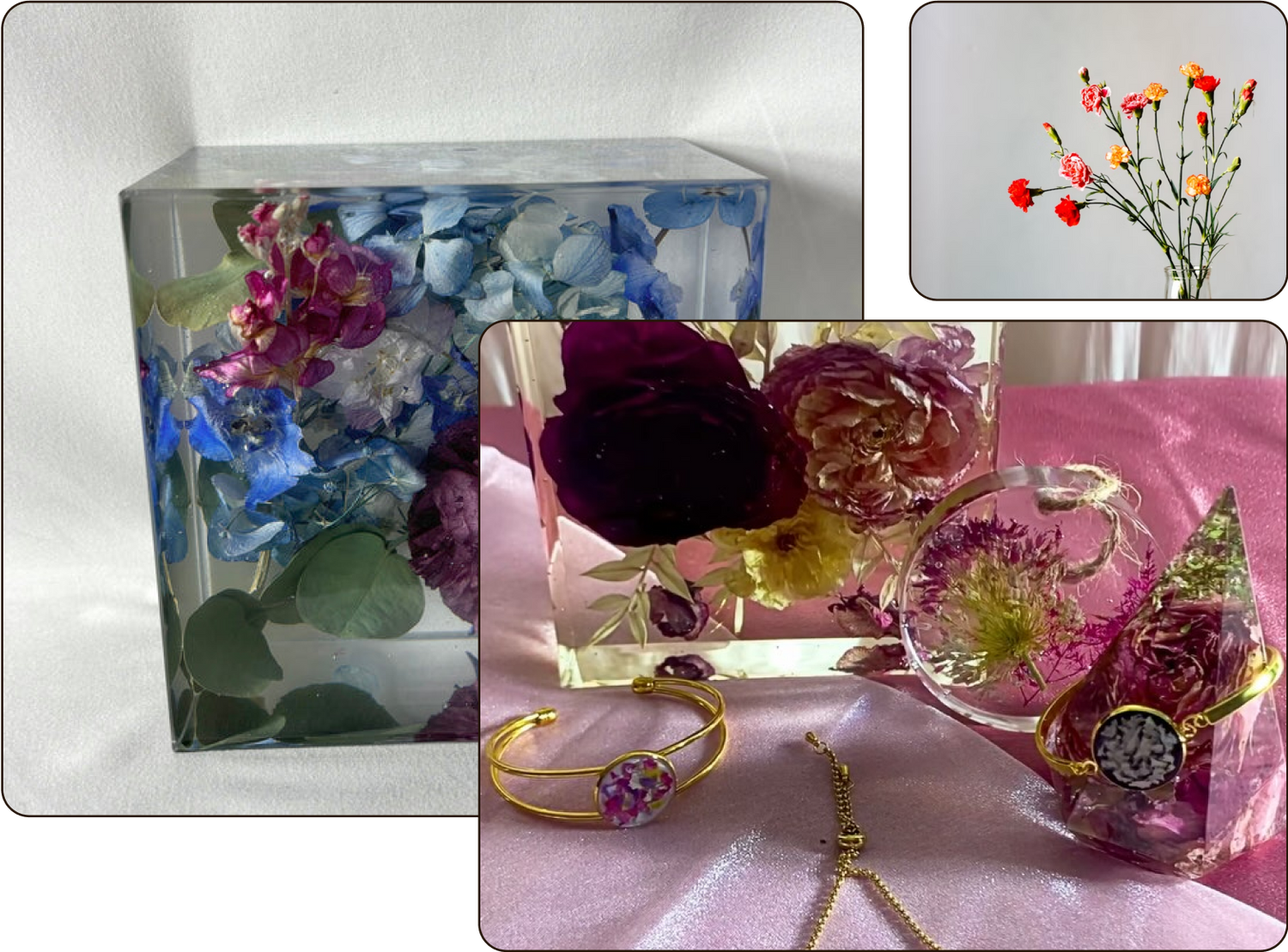
Tiny bubbles
Ambering
Pressed flower frames
Shadowboxes
Vibrant Again, Forever Cherished
-
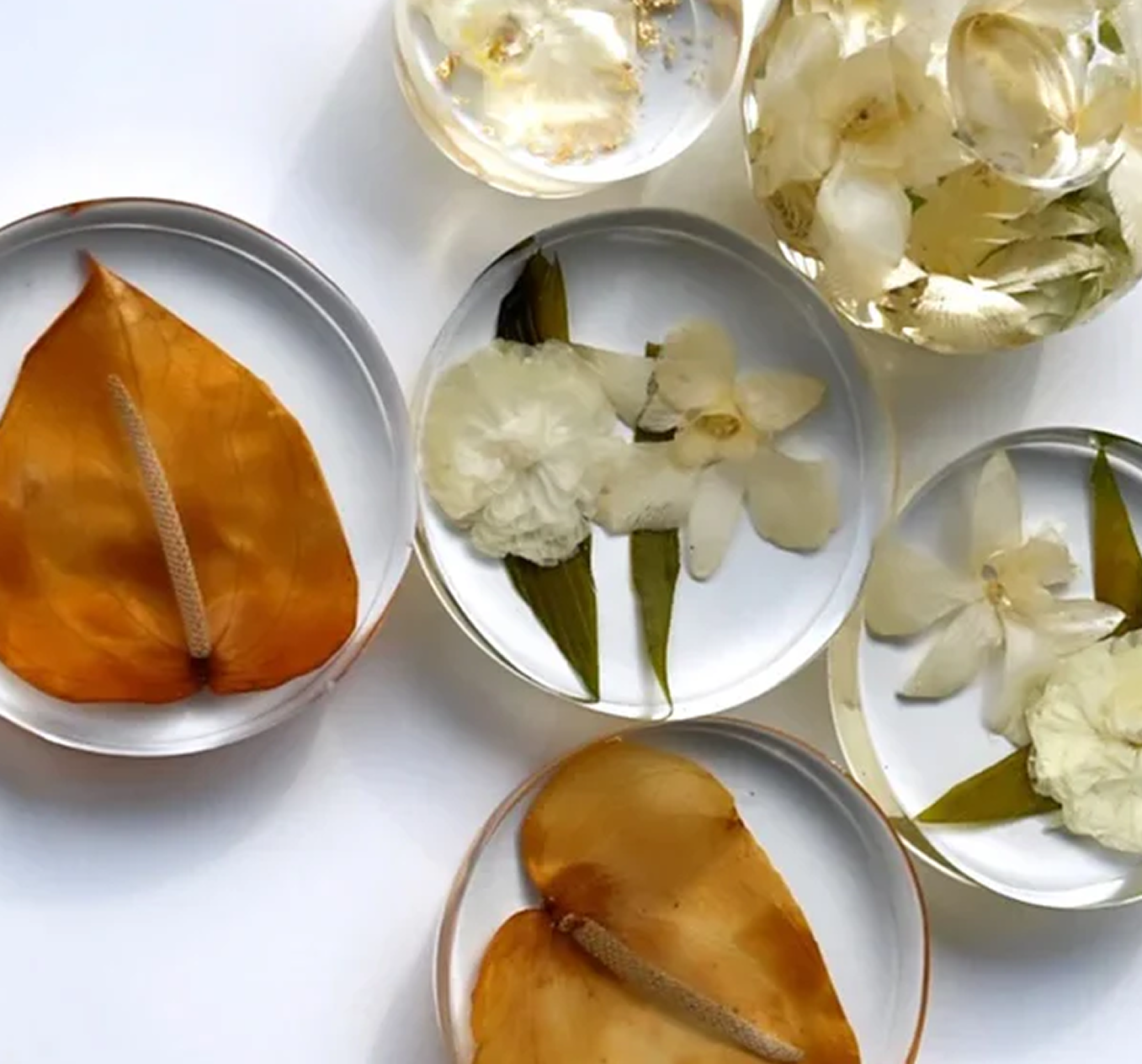 Example of a White Anthurium when dry.
Example of a White Anthurium when dry. -
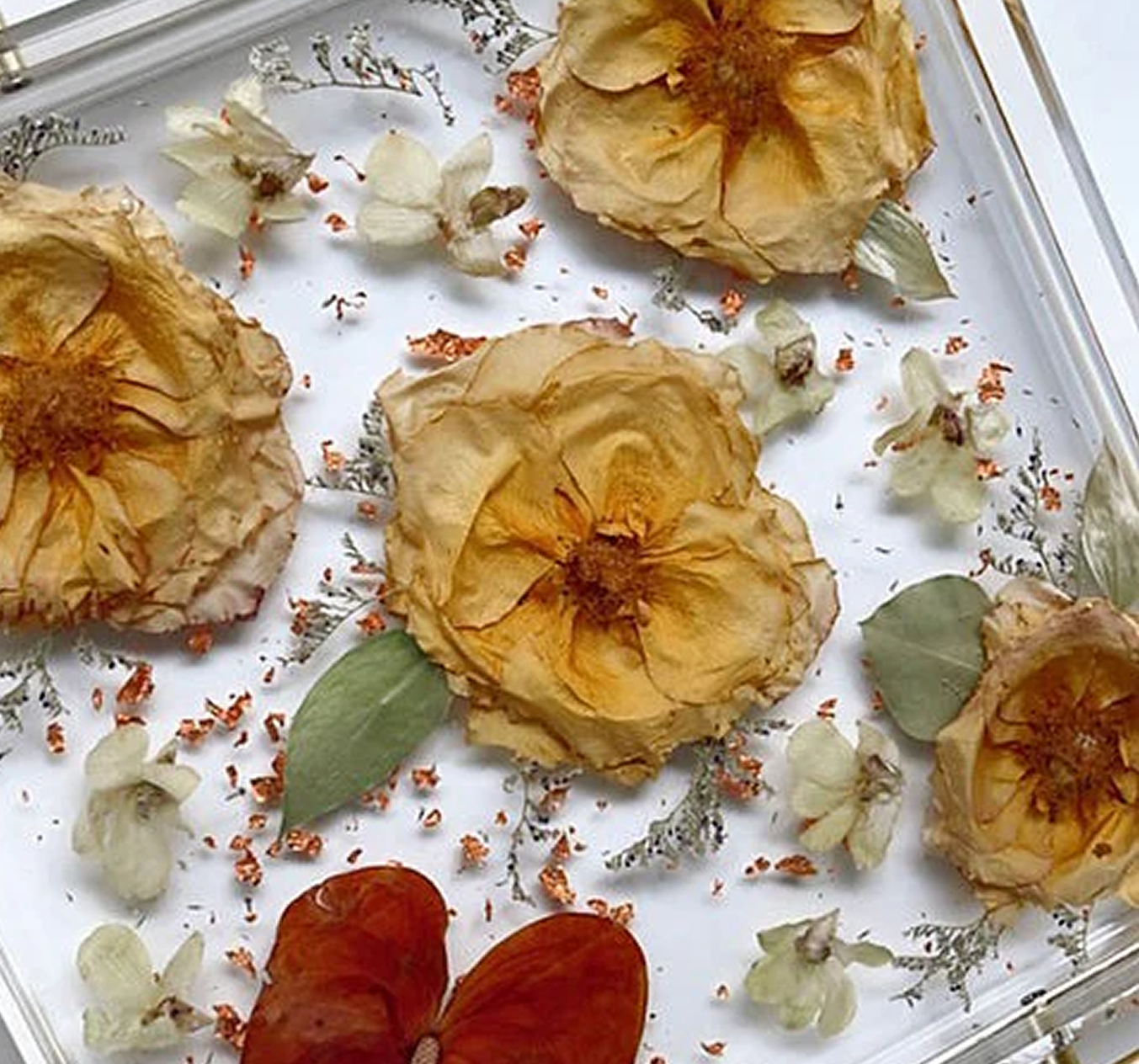 Example of a White Anthurium when dry.
Example of a White Anthurium when dry. -
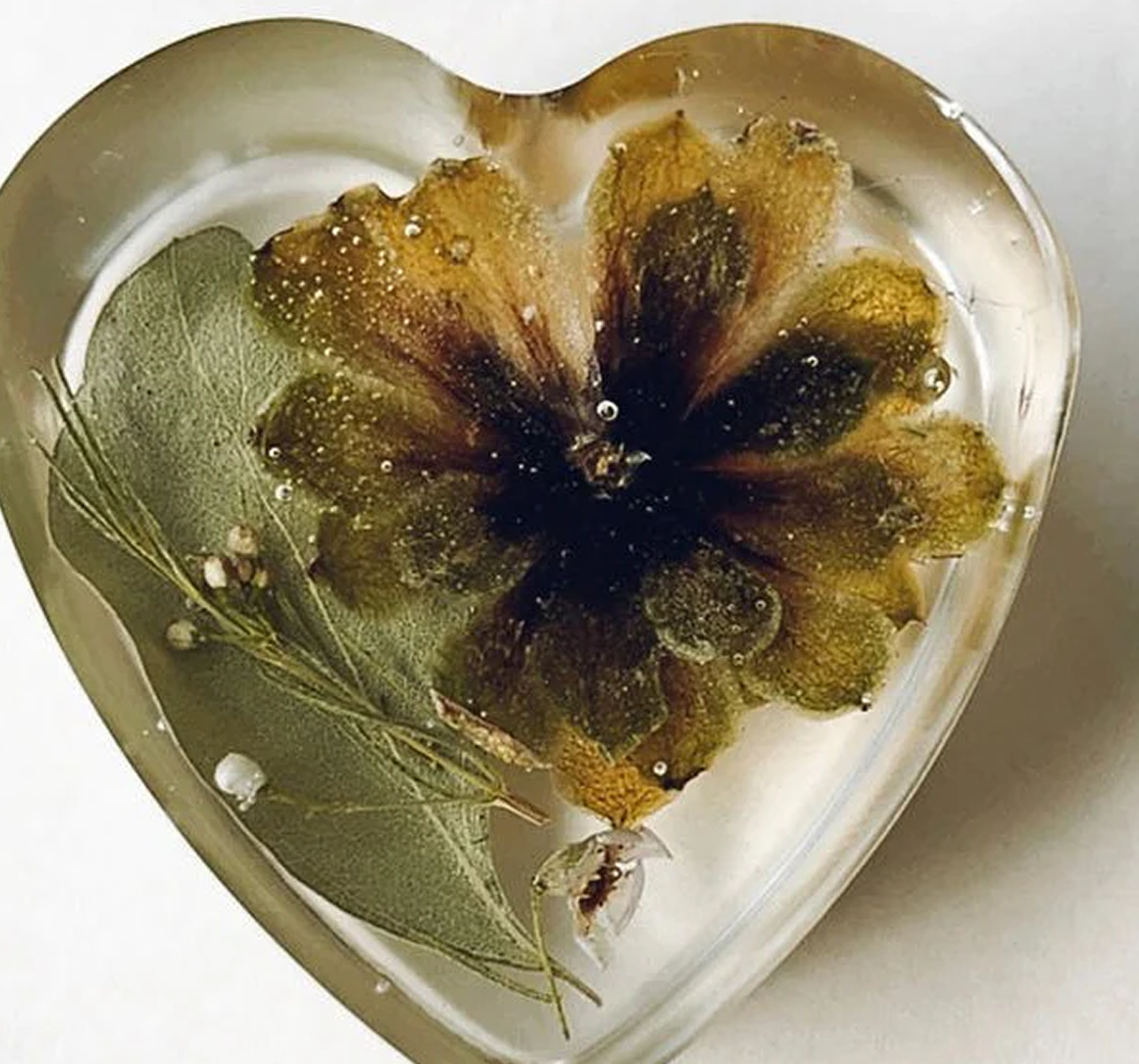 Example of a succulent when dry.
Example of a succulent when dry. -
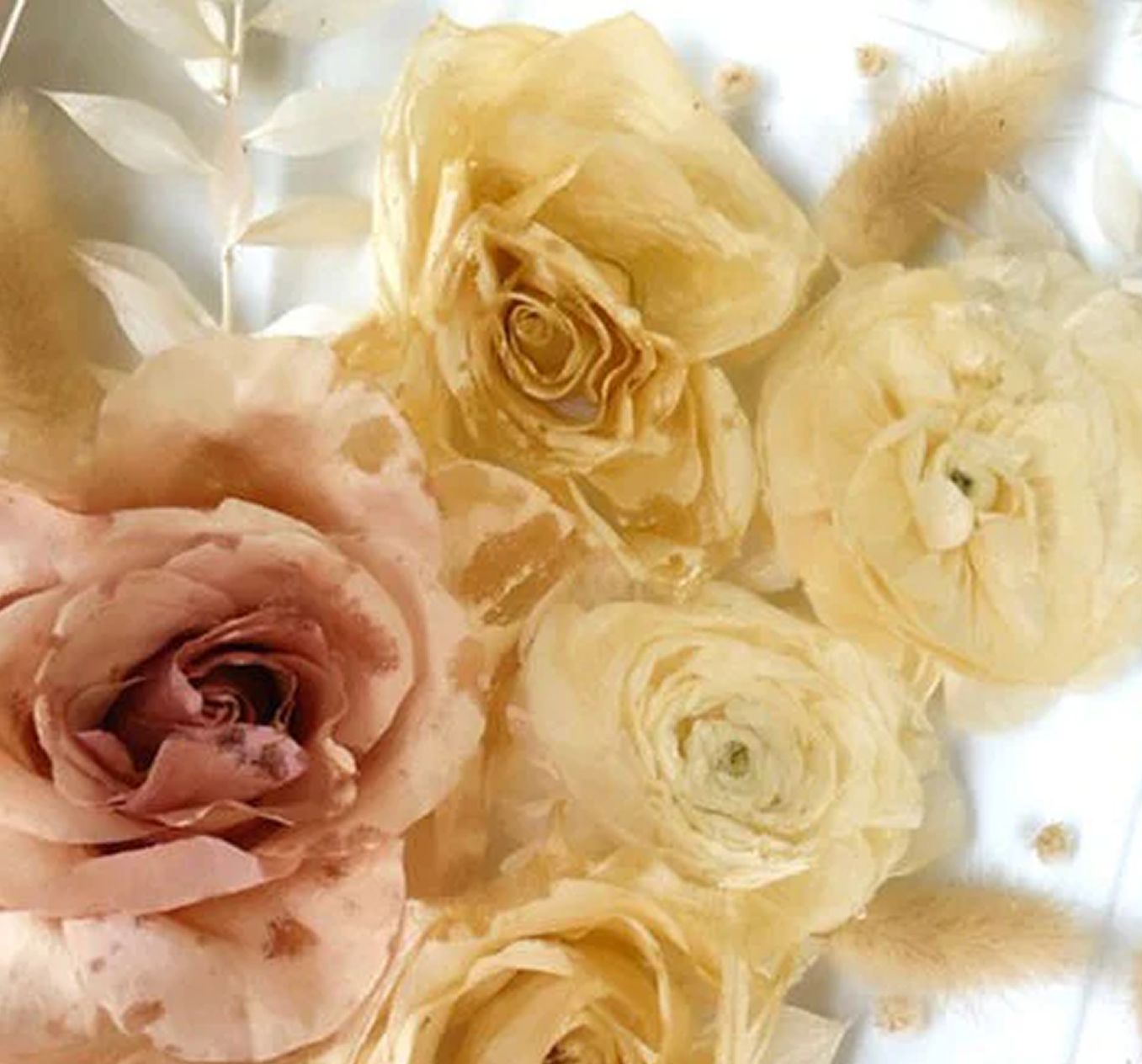 Example of white roses, white ranunculus and light pink rose when dry and with bruising.
Example of white roses, white ranunculus and light pink rose when dry and with bruising. -
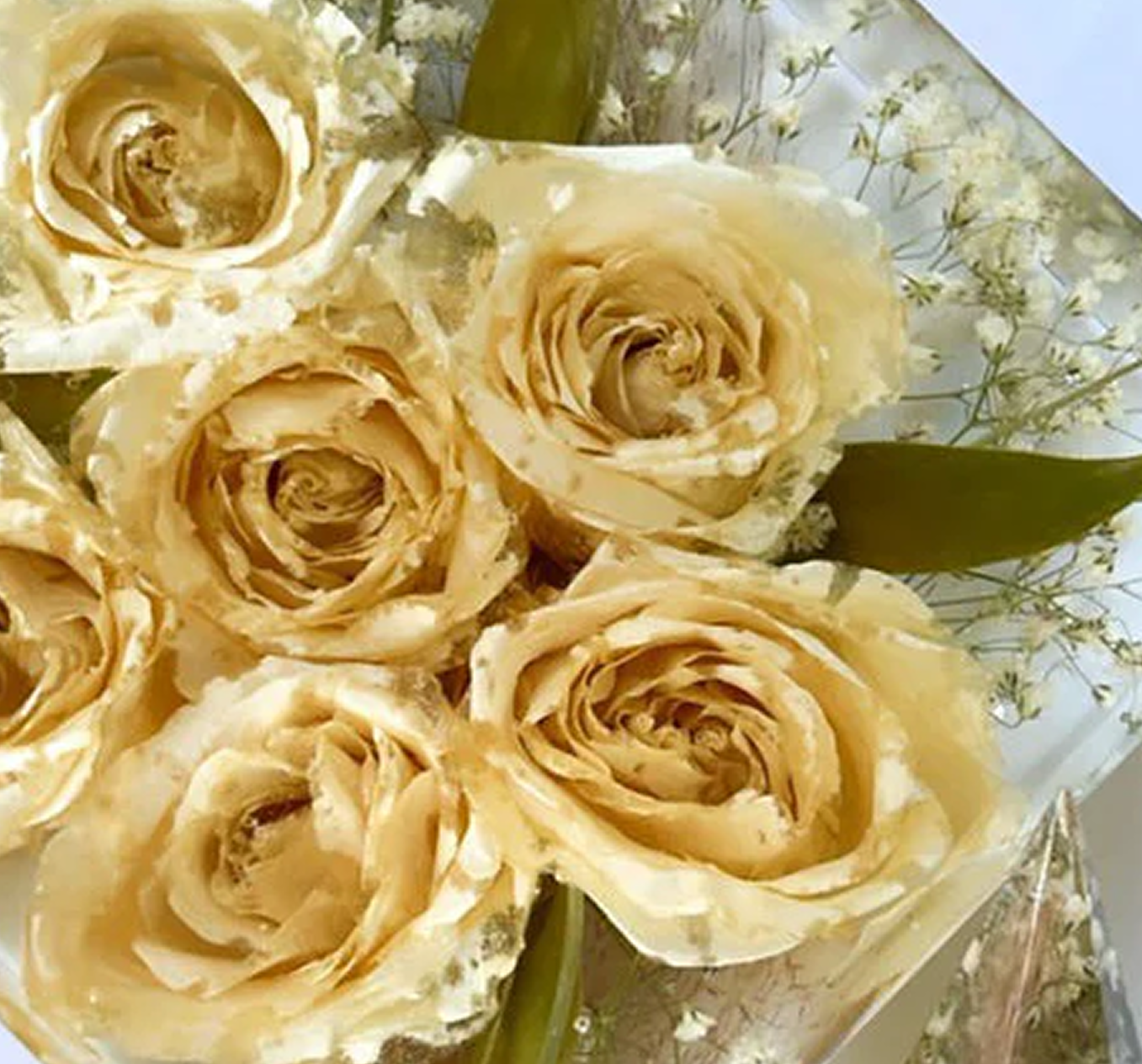 Example of white roses when dry and with bruising.
Example of white roses when dry and with bruising.
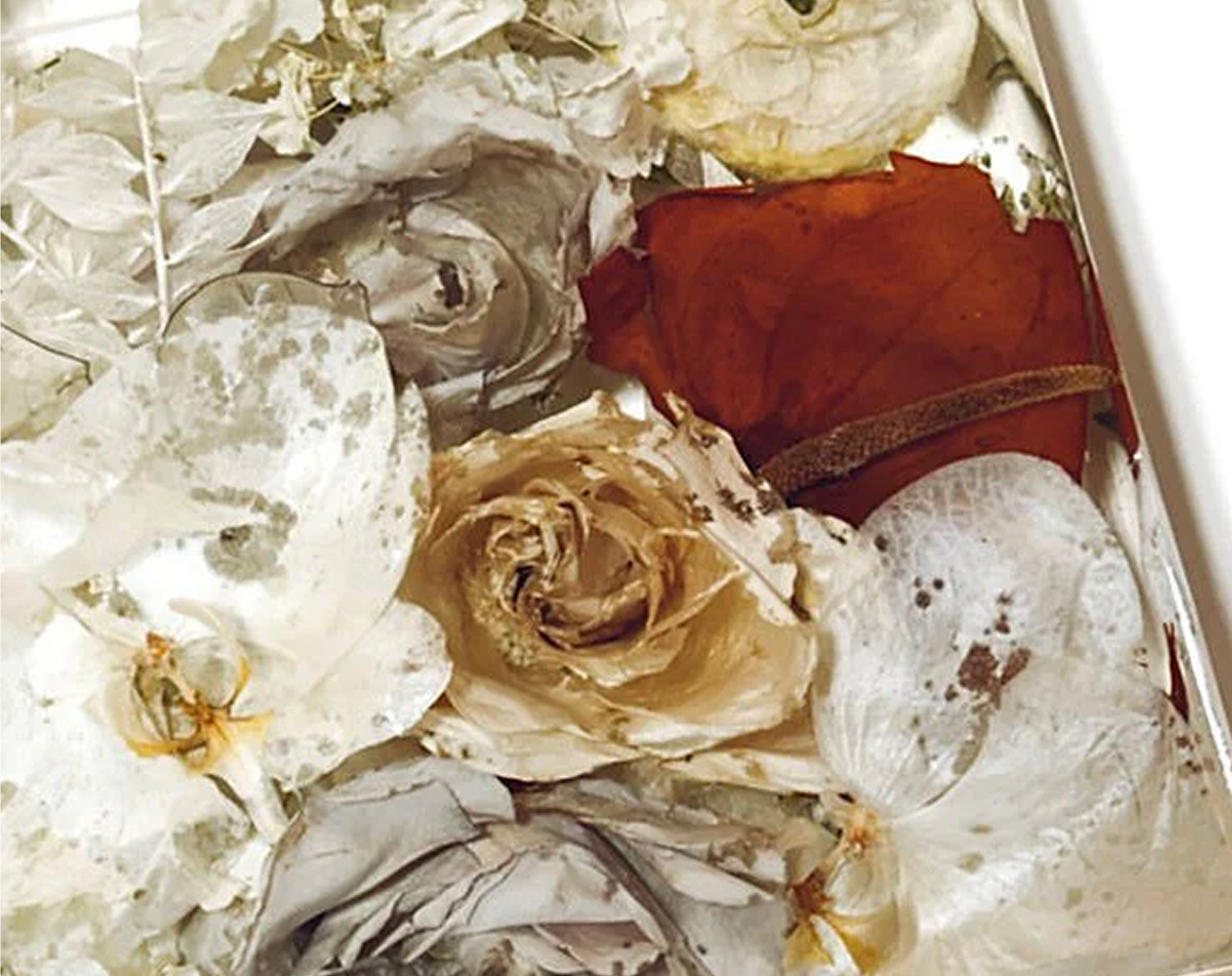
Preserving Flowers in Resin: What to Expect

Creating a resin keepsake with your special flowers is a meaningful way to capture life’s unforgettable moments. To ensure the longevity and beauty of your piece, here’s a clear overview of what to expect throughout the process and what natural changes may arise.
